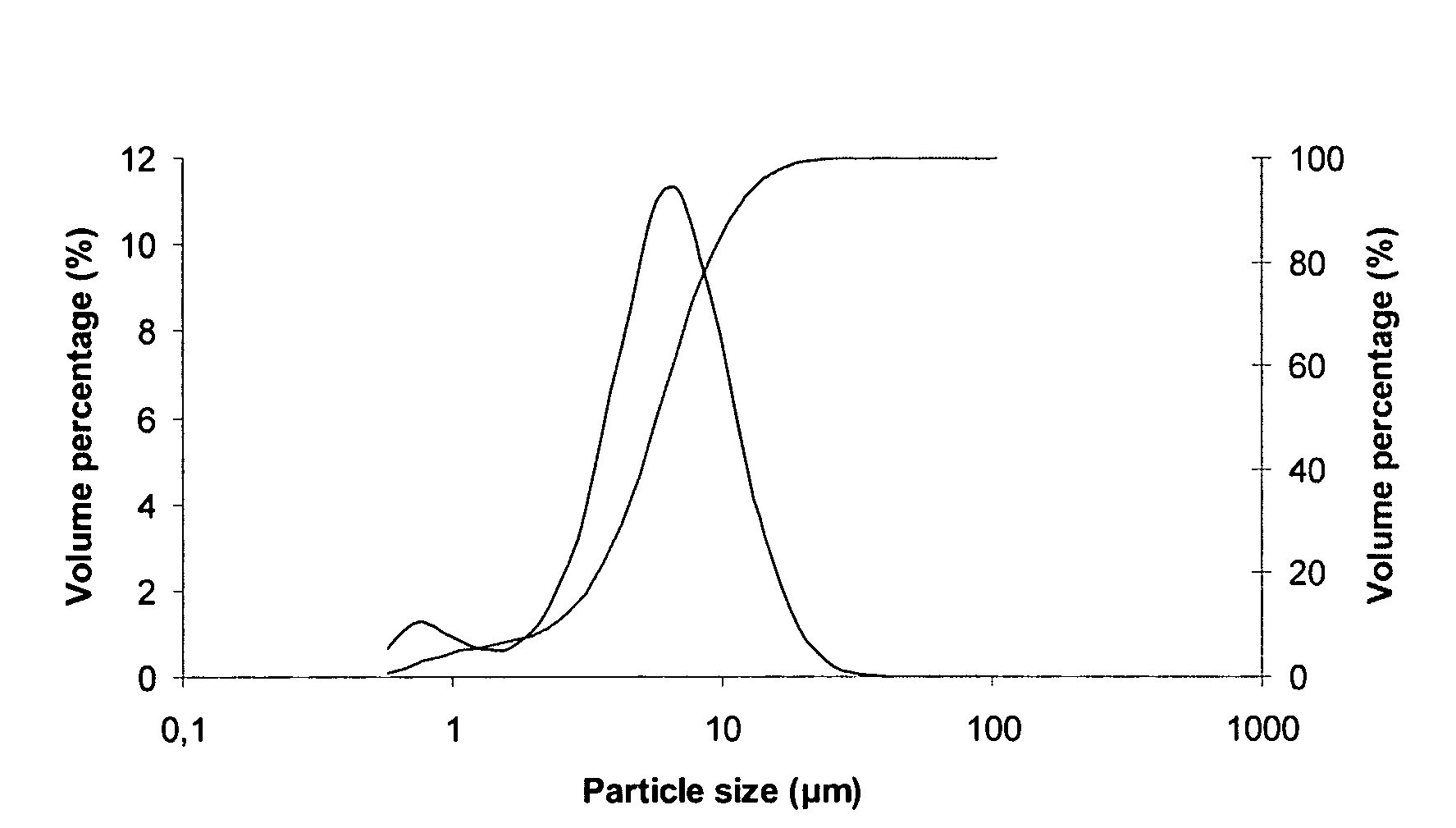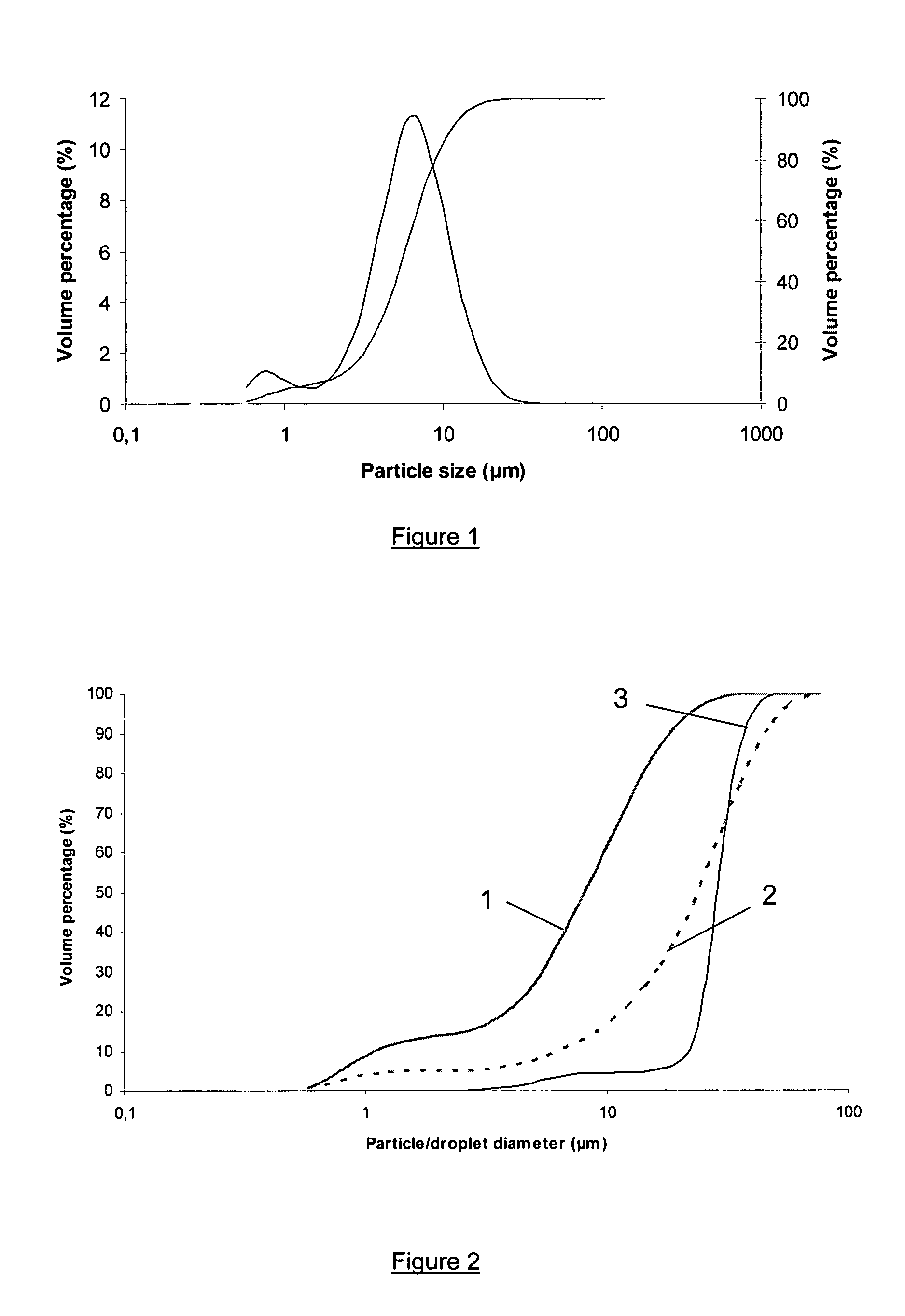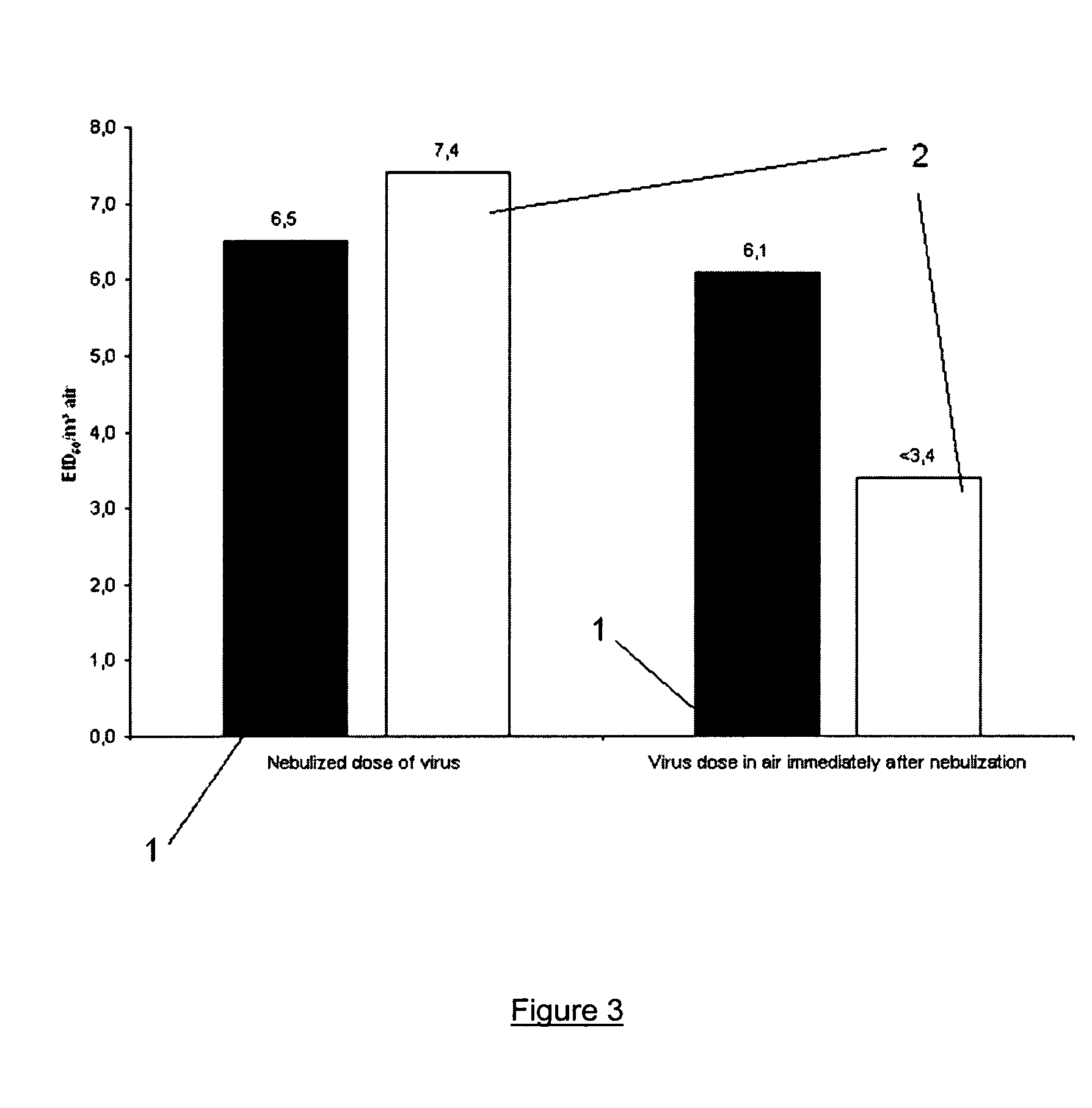Dry powder compositions and systems for poultry vaccination
a technology of compositions and powders, applied in the field of veterinary vaccination, can solve the problems of large economic losses to the poultry industry, negative economic impact on poultry production, and complicated newcastle disease, and achieve the effect of avoiding significant and easy and efficient distribution
- Summary
- Abstract
- Description
- Claims
- Application Information
AI Technical Summary
Benefits of technology
Problems solved by technology
Method used
Image
Examples
example 1
Preparation of a Dry Powder Vaccination Composition by Spray-drying
[0076]An aqueous solution containing 4% by weight trehalose and 1% by weight polyvinylpyrollidone as carriers and Newcastle Disease virus (2.1012 EID50 per gram solids) was spray-dried by making use of a Mobile Minor spray-dryer. A 1 mm two-fluid nozzle was operated at an atomizing air pressure of 1 bar. The inlet temperature was set at 160° C., which resulted, together with a feed rate of 26 ml / minute, in an outlet temperature of 70° C.
[0077]The resulting powder was evaluated:[0078]for water content and water absorption using Karl Fischer titration,[0079]for thermodynamic properties with differential scanning calorimetry, and[0080]for particle size distribution using laser scattering (see FIG. 1), the equipment used being a Mastersizer S long bench version (from Malvern).
[0081]Immediately after production, the water content of the resulting powder was 3.1% by weight, and increased to 5.9% by weight after one week of...
example 2
Comparative Evaluation of Virus Concentrations in the Air After Nebulization of a Fine Dry Powder Vaccine and a Liquid Vaccine
[0083]A fine dry vaccination powder having a water content of 3.8% by weight, and with a particle size suitable for secondary vaccination of poultry (i.e. for deposition in the lower airways), was prepared according to the invention from an aqueous solution by making use of a Mobile Minor pilot plant dryer with a 1 mm two-fluid nozzle (inlet temperature 160° C., outlet temperature 70° C., feed rate 25 ml / minute, drying gas rate 80 kg / hour, atomizing air pressure 2 bar). The feed solution submitted to spray-drying contained 3% (w / w) trehalose dihydrate, 1% (w / w) polyvinylpyrrolidone (PVP), 1% (w / w) bovine serum albumin (BSA) in distilled water, to which 107 EID50 Clone 30 vaccine virus was added per ml feed solution.
[0084]For comparison purposes, a commercial Clone 30 vaccine was reconstituted in 5 ml distilled water, of which 30 μl was further diluted to 5 ml...
example 3
Immunization of Chickens with a Dry Powder Vaccination Composition having an Average Particle Size of 7 μm
[0088]The fine dry vaccination powder produced and characterized in example 2 was administered to 4-week-old specified-pathogen-free broiler chickens (i.e. without NCD antibodies), which were housed in isolators with a volume of 1.3 m3. One group received the fine dry powder vaccine, and one group served as non-vaccinated blank control.
[0089]Two and four weeks post-vaccination blood samples were taken and evaluated for antibodies against the NCD virus by haemagglutination inhibition (HI) assay. Results are presented in FIG. 4, wherein column (1) relates to the fine trehalose-PVP-BSA powder. The dry power composition of the invention lead to a sufficient immune response at 2 weeks post-vaccination, with HI titres that are higher than the regularly obtained HI titres of 24 to 26 after a single application of a lentogenic NCD vaccine. Statistical analysis by repeated measures ANOVA...
PUM
| Property | Measurement | Unit |
|---|---|---|
| particle size | aaaaa | aaaaa |
| particle size polydispersity | aaaaa | aaaaa |
| particle size | aaaaa | aaaaa |
Abstract
Description
Claims
Application Information
 Login to View More
Login to View More - R&D
- Intellectual Property
- Life Sciences
- Materials
- Tech Scout
- Unparalleled Data Quality
- Higher Quality Content
- 60% Fewer Hallucinations
Browse by: Latest US Patents, China's latest patents, Technical Efficacy Thesaurus, Application Domain, Technology Topic, Popular Technical Reports.
© 2025 PatSnap. All rights reserved.Legal|Privacy policy|Modern Slavery Act Transparency Statement|Sitemap|About US| Contact US: help@patsnap.com



